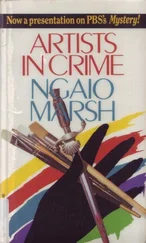Sarah Bolton - Famous European Artists
Здесь есть возможность читать онлайн «Sarah Bolton - Famous European Artists» — ознакомительный отрывок электронной книги совершенно бесплатно, а после прочтения отрывка купить полную версию. В некоторых случаях можно слушать аудио, скачать через торрент в формате fb2 и присутствует краткое содержание. ISBN: , Жанр: foreign_prose, foreign_antique, foreign_language, на английском языке. Описание произведения, (предисловие) а так же отзывы посетителей доступны на портале библиотеки ЛибКат.
- Название:Famous European Artists
- Автор:
- Жанр:
- Год:неизвестен
- ISBN:http://www.gutenberg.org/ebooks/39380
- Рейтинг книги:5 / 5. Голосов: 1
-
Избранное:Добавить в избранное
- Отзывы:
-
Ваша оценка:
- 100
- 1
- 2
- 3
- 4
- 5
Famous European Artists: краткое содержание, описание и аннотация
Предлагаем к чтению аннотацию, описание, краткое содержание или предисловие (зависит от того, что написал сам автор книги «Famous European Artists»). Если вы не нашли необходимую информацию о книге — напишите в комментариях, мы постараемся отыскать её.
Famous European Artists — читать онлайн ознакомительный отрывок
Ниже представлен текст книги, разбитый по страницам. Система сохранения места последней прочитанной страницы, позволяет с удобством читать онлайн бесплатно книгу «Famous European Artists», без необходимости каждый раз заново искать на чём Вы остановились. Поставьте закладку, и сможете в любой момент перейти на страницу, на которой закончили чтение.
Интервал:
Закладка:
Most who visit Milan to see the lace-work in stone of its exquisite cathedral, go also to the famous painting which tells alike the story of a great artist struggling to put immortal thoughts into his faces, and the story of the remorse of a human being in breaking the heart of a lovely woman. Had it not been to atone to Beatrice, probably the "Last Supper" would never have been painted in Santa Maria delle Grazie. Thus strangely has the bitterness of one soul led to the joy and inspiration of thousands!
In 1498, Louis XII. came to the throne of France, and laid claim to the duchy of Milan, enforcing his claim by arms. Lodovico fled, but was captured by the French, and kept a prisoner for ten years, until his death. Leonardo went back to his old home in Florence, taking with him two persons, his friend Luca Paciolo, who had lived with him three years at Milan, the author of De Divina Proportione , for which book the artist made sixty drawings; and his beautiful pupil Salaï, his son as he called him, "a youth of singular grace and beauty of person, with curling and wavy hair, a feature of personal beauty by which Leonardo was greatly pleased." From this dear disciple the artist painted many of his angels' heads.
Florence had changed since he went away, scarcely more than a boy. Now he was in middle life, forty-eight years old, the famous painter of the "Last Supper," the polished and renowned scholar. His first work on his return was an altar-piece for the Annunciata Church, – the Madonna, St. Anna, and the infant Christ. The cartoon, now in the Royal Academy at London, caused the greatest delight. "When finished, the chamber wherein it stood was crowded for two days by men and women, old and young, as if going to a solemn festival, all hastening to behold this marvel of Leonardo's, which amazed the whole population."
He now painted two noble Florentine ladies, Ginevra Benci, a famous beauty, and the Mona Lisa, the third wife of Francesco del Giocondo, the latter of whom it is conjectured that Leonardo loved.
Vasari says, "Whoever shall desire to see how far art can imitate nature, may do so to perfection in this head, wherein every peculiarity that could be depicted by the utmost subtlety of the pencil has been faithfully reproduced. The eyes have the lustrous brightness and moisture which is seen in life, and around them are those pale, red, and slightly livid circles, also proper to nature, with the lashes, which can only be copied as these are with the greatest difficulty; the eyebrows also are represented with the closest exactitude, where fuller and where more thinly set, with the separate hairs delineated as they issue from the skin, every turn being followed and all the pores exhibited in a manner that could not be more natural than it is; the nose, with its beautiful and delicately roseate nostrils, might be easily believed to be alive; the mouth, admirable in its outline, has the lips uniting the rose-tints of their color with that of the face in the utmost perfection, and the carnation of the cheek does not appear to be painted, but truly of flesh and blood; he who looks earnestly at the pit of the throat cannot but believe that he sees the beating of the pulses, and it may be truly said that this work is painted in a manner well calculated to make the boldest master tremble, and astonishes all who behold it, however well accustomed to the marvels of art.
"Mona Lisa was exceedingly beautiful; and while Leonardo was painting her portrait, he took the precaution of keeping some one constantly near her, to sing or play on instruments, or to jest and otherwise amuse her, to the end that she might continue cheerful, and so that her face might not exhibit the melancholy expression often imparted by painters to the likenesses they take. In this portrait of Leonardo's, on the contrary, there is so pleasing an expression, and a smile so sweet, that while looking at it one thinks it rather divine than human, and it has ever been esteemed a wonderful work, since life itself could exhibit no other appearance."
No wonder Grimm says, "He who has seen the Mona Lisa smile is followed forever by this smile, just as he is followed by Lear's fury, Macbeth's ambition, Hamlet's melancholy, and Iphigenia's touching purity."
Pater says of the Mona Lisa, "'La Gioconda' is, in the truest sense, Leonardo's masterpiece, the revealing instance of his mode of thought and work. In suggestiveness, only the 'Melancholia' of Dürer is comparable to it; and no crude symbolism disturbs the effect of its subdued and graceful mystery. We all know the face and hands of the figure, set in its marble chair, in that cirque of fantastic webs, as in some faint light under sea. Perhaps of all ancient pictures time has chilled it least.
"The fancy of a perpetual life, sweeping together ten thousand experiences, is an old one; and modern thought has conceived the idea of humanity as wrought upon by, and summing up in itself, all modes of thought and life. Certainly Lady Lisa might stand as the embodiment of the old fancy, the symbol of the modern idea."
One feels with Michelet, when he says, "It fascinates and absorbs me. I go to it in spite of myself, as the bird is drawn to the serpent." I have found myself going day after day to the Louvre to linger before two masterpieces; to grow better through the womanhood of the Venus de Milo, and to rest in the peaceful, contented smile of the Mona Lisa. Nobody can forget the perfect hand. One seems to feel the delicacy of the loving touch which Leonardo gave as he painted through those long yet short four years, leaving the portrait, as he declared, unfinished, because of his high ideal of what a painting should be. The husband did not purchase the picture of the artist – did he not value the beauty? It was finally sold to Francis I., for four thousand gold crowns, an enormous sum at that day.
After Da Vinci had been two years in Florence, Cæsar Borgia, the son of Pope Alexander VI., appointed him architect and general engineer. He travelled through Central Italy, making ramparts and stairways for the citadel of Urbino, machinery at Pesaro, designing a house and better methods of transporting grapes at Cesena, and finer gates at Cesenatico. At one place he lingered to enjoy the regular cadence of the waves beating on the shore; at another, his soul filled with music, he was soothed by the murmur of the fountains. But Cæsar was soon obliged to flee into Spain, and Leonardo could no longer hold the position of engineer.
Pietro Soderini, who had been elected gonfaloniere for life, was the friend of both Leonardo and Michael Angelo. He wished to have these two greatest artists paint each a wall in the Hall of the Palazzo Vecchio. Michael Angelo chose for his subject a group of soldiers surprised by the enemy while bathing in the Arno; Leonardo, a troop of horsemen fighting round a standard, a scene from the battle of Anghiari, fought by the Florentines against the North Italians. Vasari says, "Not only are rage, disdain, and the desire for revenge apparent in the men, but in the horses also; two of those animals, with their fore-legs intertwined, are attacking each other with their teeth, no less fiercely than do the cavaliers who are fighting for the standard."
Vasari thinks it "scarcely possible adequately to describe … the wonderful mastery he exhibits in the forms and movements of the horses… The muscular development, the animation of their movements, and their exquisite beauty, are rendered with the utmost fidelity."
When the rival cartoons of Michael Angelo and Da Vinci were publicly exhibited, the excitement was great between the followers of each artist. When Da Vinci began to paint upon the wall, in oils, as in the "Last Supper," the colors so sank into it that he abandoned the work. Soderini accused him of having received money and not rendering an equivalent, which so wounded the pride, of the artist that his friends raised the amount which had been advanced to him, and offered it to the gonfaloniere, who generously refused to accept it. Da Vinci had already become offended with Soderini's treasurer, who offered him a portion of his pay in copper money. Leonardo would not take it, saying, "I am no penny-painter."
Читать дальшеИнтервал:
Закладка:
Похожие книги на «Famous European Artists»
Представляем Вашему вниманию похожие книги на «Famous European Artists» списком для выбора. Мы отобрали схожую по названию и смыслу литературу в надежде предоставить читателям больше вариантов отыскать новые, интересные, ещё непрочитанные произведения.
Обсуждение, отзывы о книге «Famous European Artists» и просто собственные мнения читателей. Оставьте ваши комментарии, напишите, что Вы думаете о произведении, его смысле или главных героях. Укажите что конкретно понравилось, а что нет, и почему Вы так считаете.












